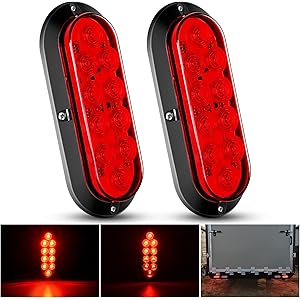When I first considered the idea of placing a mobile home on my own land, I was filled with both excitement and trepidation. The thought of having my own space, free from the constraints of traditional housing, was incredibly appealing. But I quickly realized that the journey was not as simple as it seemed. In this article, I’ll share my experiences, insights, and practical steps to help you navigate the process of putting a mobile home on your own land.
Understanding Mobile Homes and Their Benefits
Before diving into the logistics, let’s explore what mobile homes are and why they can be a fantastic option for many. Mobile homes, also known as manufactured homes, are prefabricated structures that are built in a factory and then transported to a site for installation. They offer numerous benefits:
- Affordability: Mobile homes are generally more cost-effective than traditional homes, making them accessible for many.
- Flexibility: You can place a mobile home in various locations, whether it’s rural land or a designated mobile home park.
- Quick Installation: Unlike traditional homes, which can take months or years to build, mobile homes can often be set up in just a few weeks.
- Less Maintenance: They typically require less upkeep than traditional homes, which can save you time and money.
Do You Own the Land? Zoning and Permitting Requirements
One of the first questions I encountered was whether I owned the land where I wanted to place my mobile home. If you already own land, that’s a great start! However, there are several factors to consider:
Zoning Regulations
Every area has zoning laws that dictate what can be built where. I learned this the hard way when I discovered that my dream property was zoned for agricultural use only. Before you make any decisions, it’s crucial to check with your local zoning office. Here’s what to look for:
- Residential zoning: Ensure that mobile homes are permitted in your area.
- Setback requirements: These regulations dictate how far your home must be from property lines.
- Land use: Confirm whether your land can be used for a mobile home or if there are restrictions.
Permitting Process
Once I confirmed that my land was suitable, I had to navigate the permitting process. This involved:
- Applying for a building permit: Most areas require a permit before placing a mobile home.
- Inspections: Your mobile home may need to pass inspections to ensure it meets safety and building codes.
- Licenses: In some cases, you may need a special license to operate a mobile home.
Financing Your Mobile Home
Financing a mobile home can be different from financing a traditional home. Here are some options I explored:
Types of Financing
- Chattel loans: These are personal loans used specifically for mobile homes that are not affixed to land.
- Traditional mortgages: If you own the land, you may qualify for a mortgage that covers both the home and the land.
- FHA loans: The Federal Housing Administration offers loans for manufactured homes, often with lower down payment requirements.
Improving Your Credit Score
Before applying for financing, I took some time to improve my credit score. This made a significant difference in the interest rates I was offered. Here are some tips I found helpful:
- Pay bills on time: Consistently paying your bills can boost your score.
- Reduce debt: Lowering your credit card balances can improve your debt-to-income ratio.
- Check your credit report: Ensure there are no errors that could be dragging your score down.
Choosing the Right Mobile Home
Once I secured financing, it was time to choose the mobile home. This step was both exciting and overwhelming due to the myriad options available:
Types of Mobile Homes
- Single-wide: These are narrower and typically less expensive, making them a great choice for smaller families or individuals.
- Double-wide: More spacious and often seen as more similar to traditional homes, double-wides provide additional comfort.
- Custom-built: For those seeking something unique, many manufacturers offer customizable options.
Factors to Consider
When selecting a mobile home, I recommend considering the following:
- Size and layout: Ensure it fits your lifestyle and needs.
- Energy efficiency: Look for homes with good insulation and energy-efficient appliances.
- Warranty: A solid warranty can provide peace of mind and protection against defects.
Preparing Your Land for Installation
With my mobile home selected, I had to prepare the land for installation. This was a critical step that required careful planning:
Site Preparation
Here’s what I did to prepare my land:
- Clearing the land: I ensured that the site was free of debris, rocks, and vegetation.
- Leveling the ground: A level foundation is crucial for the stability of the mobile home.
- Utilities: Arranging for water, electricity, and sewage connections is essential before installation.
Choosing a Foundation
Mobile homes can be placed on different types of foundations, including:
- Concrete slab: A common choice for stability and durability.
- Piers: Often used in areas prone to flooding, piers elevate the home above ground level.
- Basements: For those seeking extra living space, a basement can be a viable option.
Installation Process
The installation of a mobile home is a crucial step that requires professional assistance. Here’s what I learned about the installation process:
Hiring Professionals
While it might be tempting to do it yourself, I strongly recommend hiring professionals for the installation. They have the expertise to ensure your home is set up correctly and safely. Look for:
- Experienced contractors: Seek out those who specialize in mobile home installation.
- References: Ask for recommendations from others who have gone through the process.
- Insurance: Ensure that the contractor is insured to protect against any potential damages.
Final Inspections
After installation, local authorities will typically conduct inspections to ensure that everything meets safety and building codes. Be prepared for this step, as it is crucial for obtaining your certificate of occupancy.
Living in Your Mobile Home: What to Expect
After months of planning and hard work, I finally moved into my mobile home. Here are some insights I gained about life in a mobile home:
Space Optimization
Mobile homes often come with limited space, so I had to get creative with storage and organization. Here are some tips I found helpful:
- Utilize vertical space: Shelving units and tall furniture can maximize storage.
- Multi-functional furniture: Invest in furniture that serves multiple purposes, such as a sofa bed.
- Declutter regularly: Keep only what you need to maintain a tidy living area.
Community Living
Many mobile homes are located in communities, which can foster a sense of camaraderie. Engaging with neighbors and participating in community events can enrich your living experience.
FAQs About Placing a Mobile Home on Your Own Land
1. Can I put a mobile home on my own land without permits?
No, most areas require permits to place a mobile home on land. It’s essential to check local regulations.
2. What are the zoning requirements for mobile homes?
Zoning requirements vary by location. Typically, areas must be zoned for residential use to allow mobile homes.
3. How much does it cost to install a mobile home?
The installation cost can vary widely based on factors such as location, foundation type, and site preparation, but it generally ranges from $3,000 to $10,000.
4. Can I finance a mobile home on my own land?
Yes, you can secure financing options that cover both the mobile home and the land, often through traditional mortgages or FHA loans.
5. What are the maintenance requirements for a mobile home?
Maintenance for mobile homes includes regular inspections of the foundation, plumbing, and electrical systems, as well as upkeep of the exterior to prevent damage.
Conclusion
Placing a mobile home on your own land can be a rewarding journey filled with challenges and triumphs. Through my experience, I discovered the importance of understanding zoning regulations, navigating the permitting process, and preparing the land properly. With the right preparation and guidance, you can turn your dream of owning a mobile home into a reality. Remember, it’s not just about finding a place to live; it’s about creating a space that feels like home.
If you found this article helpful, I encourage you to sign up for our newsletter for more insights and tips on mobile home living. Also, don’t forget to share this article with your friends and on social media to help others discover the possibilities of mobile home ownership!
Nilight 6 Inch Oval Red LED Trailer Tail Light Surface Mount 2PCS 10 LEDs Waterproof Stop Brake Turn Trailers Lights for Truck RV Boat Bus Lorry Camper Van Caravan
$10.58 (as of October 10, 2025 07:02 GMT -03:00 - More infoProduct prices and availability are accurate as of the date/time indicated and are subject to change. Any price and availability information displayed on [relevant Amazon Site(s), as applicable] at the time of purchase will apply to the purchase of this product.)
Sign up for our newsletter and stay up to date with exclusive news
that can transform your routine!





